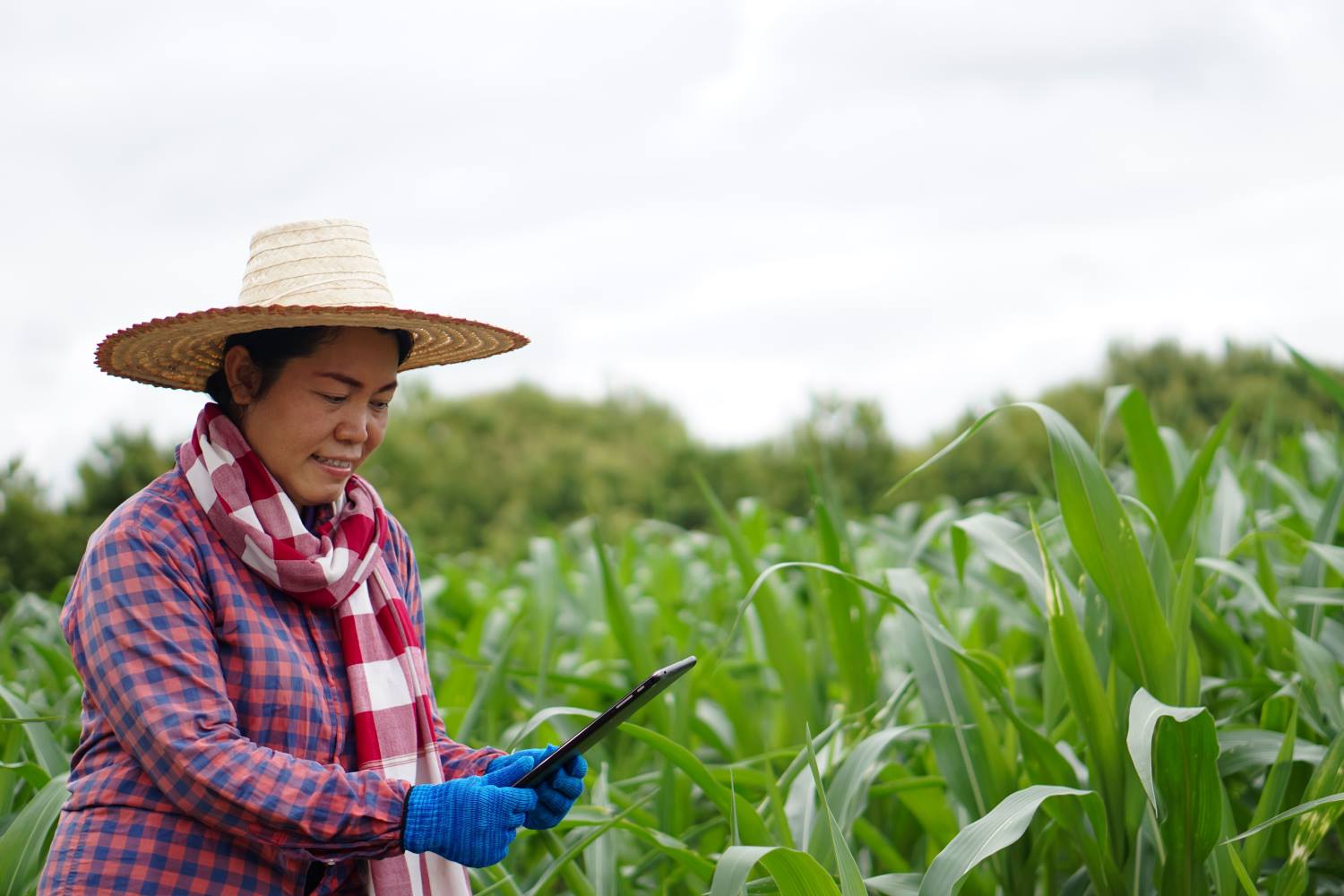Scaling Digital Extension and Advisory Services: “The Role of Intermediaries as Technology-Farmer Bridge Builders"

Scaling Digital Extension and Advisory Services: “The Role of Intermediaries as Technology-Farmer Bridge Builders"
AUTHOR: MARA HECKMANN
PUBLISH DATE: 11 DECEMBER 2023
Scaling digital agricultural extension and advisory services for smallholder farmers in developing countries has proven to be a complex puzzle. Despite having the potential to provide valuable information to smallholder farmers and transform agricultural markets, many of these services have struggled to gain widespread adoption. Most of them remain in the pilot phase, facing substantial scaling challenges such as low digital literacy, limited infrastructure, and language barriers. Across the agriculture value chain intermediaries act as facilitators and agents in a transaction that involves two or more parties. While there are many different types of intermediaries (organisational, technological), human intermediaries acting in the supply chain comprise individuals working directly with farmers, such as extension agents, middlemen, agro-dealers, and leaders of farmer organizations. These intermediaries are interesting to look at as they continue to play a crucial role in connecting smallholder farmers to markets. It is crucial to leverage their local expertise and strengths to design effective digital extension and advisory services. This raises the question of whether to combine the strengths of human intermediaries with digital technology to overcome challenges in scaling digital extension and advisory services for agriculture. This article explores innovative ways to involve intermediaries in the design of digital extension and advisory services, leveraging their strengths and local expertise.
Leveraging intermediaries’ well-established relationships with farmers
A look into existing literature has revealed that one of the major obstacles to increasing the uptake of digital extension and advisory services is that farmers often prefer face-to-face interaction over anonymous phone-based communication. To build trust and offer context-specific services, it's essential to combine digital advice with agent guidance through in-person meetings with familiar representatives who understand the farmers and their land. Digital extension and advisory services can also pivot towards partnerships with farmer cooperatives and networks for executing field-level tasks and overcoming scaling challenges. Leveraging the influence of leaders from farmer organizations, who are well-known and possess higher social capital, can build trust among farmers, overcome literacy barriers, and drive technology adoption. An example is the Plantwise Plus programme, which aims to enhance accessibility to user-friendly decision support tools and information, empowering advisors and farmers to make well-informed decisions in their crop management practices. It collaborates with local agricultural advisory and extension providers, offering up-to-date information and digital tools to improve the capacity of farmer advisory in smallholder communities.
Leveraging Intermediaries’ Skills, Expertise and Social Network
Another challenge is the high levels of illiteracy among farmers, limiting their ability to use Information and Communication Technologies and access the information they offer. To overcome this barrier, trusted local intermediaries can act as bridges for delivering SMS-based information to farmers. When the complexity of services is managed by an extension agent or a tech-savvy individual of the family, this frees up resources for farmers and enhances the perceived usefulness of technology-based services. Furthermore, addressing the issue of low service availability in local languages is essential. Extension agents and trained advisors can play a crucial role in translating information and agro-advice into the native language of farmers, and supporting them with interpreting the data, tailored to their local context. An example is the multilingual information and capacity building service, which disseminates global and local access to high-quality farmer-to-farmer training videos to farmers and extension service providers worldwide in local languages. To overcome connectivity barriers, scholars also suggest using more contextually appropriate offline apps. For instance, AgriCoach is a digital application providing last-mile agricultural extension information. It assists in determining the optimal timing, crop selection, and cultivation methods for the best agricultural outcomes. The platform operates predominantly offline, addressing connectivity challenges, and delivers pest, disease, and weather updates in local languages, as well as French and English. Due to the low extension officer-to-farmer ratio in some rural areas, scholars propose two alternative types of intermediaries to reach smallholder farmers: Youth and Agro dealers. Family, friends, neighbours, and local input dealers are often farmers' top-ranked sources of information and they enjoy a high degree of trust. By collaborating with these intermediaries and providing them with training, they can transform into conduits for agricultural guidance to small-scale farmers and utilise new practices and innovations on their farms.

Leveraging intermediaries’ data collection capabilities
Challenges to scaling extension and advisory services often relate to financial sustainability and heavy reliance on donor funding. This is why some services shifted their business model to offer bundles of services to cross-subsidise their advisory service from revenues generated by selling data, offering analytical services and partnering with organisations and research institutions. However, the lack of availability and access to high-quality data remains an obstacle. One of the key activities of these bundled services is establishing a network of field agents who register the farmer and collect farm-specific data points. These field agents can support with collecting data which creates intelligence for the service owner, generating a huge amount of data for customising advisory and for partners to optimise their operations. An example is TaroWorks LLC, incubated by the Grameen Foundation, a mobile web platform that enables agribusiness and extension service providers to connect with farmers in hard-to-reach rural areas. It works offline to help extension workers collect and use data for informed decision-making. It collaborates with organizations and non-profits that run extension programs, charging an annual license fee based on unique app logins.
A way ahead: A complementarity of human intermediaries and digital tools
The synergy between human intermediaries and technology provides a pathway for scaling digital solutions. Rather than side-lining middlemen, harnessing their established relationships, digital expertise, social networks, and data collection capabilities may unlock new possibilities. Undeniably, implementing sound technology design via the integration of feedback mechanisms, user-centred design principles, and participatory design approaches is necessary to mitigate the possible risk of intermediaries exploiting farmers and distorting market signals. In the future, it will be interesting to see how conversational artificial intelligence (AI) and the integration of chatbots based on language-based models such as ChatGPT could transform digital advisory services for smallholder farmers in developing countries. Pioneer apps like FarmChat, which combines AI and local farming experts, already provide farmers with advisory services through unlimited AI chats and personalized one-on-one sessions, supporting informed decision-making.
The complexities of smallholder agriculture require a harmonious blend of human insight and digital efficiency. Intermediaries need to act as entities that bridge the gap between technology and the farming community. Hence, digital agricultural solution providers need an explicit strategy for working with intermediaries to reach farmers and scale their services. A prerequisite for new market participants should be that the value proposition and business model for intermediaries are clarified from the outset. For existing solution providers, a strategy involves identifying their unique scaling challenges and determining whether intermediaries' skills, such as their well-established relationships with farmers or data collection capabilities as well as their social network can help meet these challenges. Finally, establishing a local cooperation network of field agents, agricultural input sellers, young people and leaders of farmers' organisations is key to unlocking the full potential and reach of digital agricultural services.

















